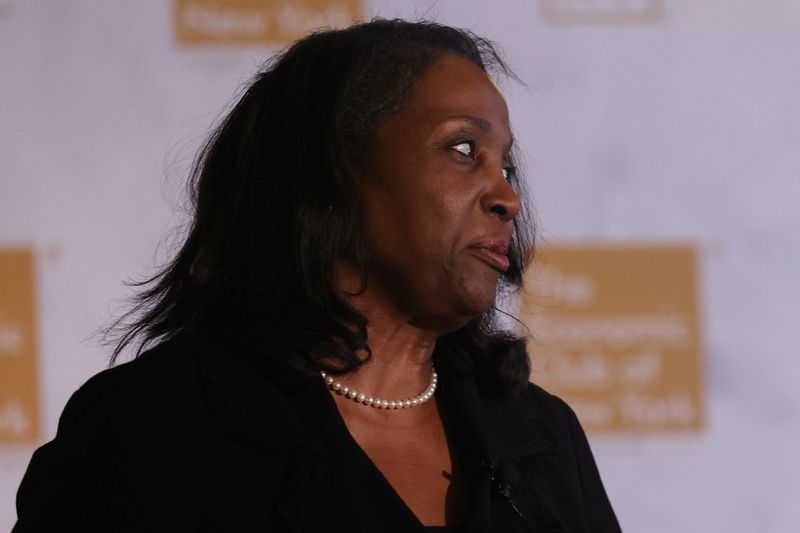Gold soars to record high over $3,900/oz amid yen slump, US rate cut bets
Investing.com - An order from the U.S. Supreme Court allowing Federal Reserve Governor Lisa Cook to remain at the post for now does not mean that Cook is "in the clear yet," according to analysts at Barclays.
In a ruling on Wednesday, the high court declined to let President Donald Trump immediately remove Cook from the position, adding that it would review the White House’s ongoing push to fire her at oral arguments in January.
A number of senior former officials from the Fed and Treasury Department, as well as members of Cook’s legal team, had warned that allowing Trump to fire Cook while she is pursuing legal action over her role would spark a round of economic ructions and dent public confidence in the Fed.
The conservative majority on the Supreme Court had previously sided with Trump when he has ousted the heads of other independent agencies, although the justices’ stance on Cook could be interpreted as a sign that the central bank is considered to be a particularly "unique" entity, the Barclays analysts said in a note.
They flagged that a separate case before the Supreme Court regarding Trump’s removal of the leader of the Federal Trade Commission also raises questions around whether federal judges can block the ouster of independent agency officials by granting an injunction or ordering reinstatement -- options known as "equitable relief" -- or only award after-the-fact legal remedies such as back pay or damages.
"If the Supreme Court decides that courts can prevent a person’s removal through equitable relief, we think it is far more likely that Cook can keep serving while litigation proceeds. If the Court decides that only legal remedies are available, it increases the likelihood that Cook is removed even if she ultimately wins on the merits," the Barclays analysts wrote.
Financial markets have been keeping close tabs on the legal battle, which could factor heavily into the future of the central bank’s longstanding role as a politically-independent setter of interest rates. Economists have warned that any erosion of this independence could diminish the Fed’s ability to calibrate rates in the best way to bolster the wider economy, rather than serve the interests of the executive branch.
Since returning to the White House in January, Trump has frequently pressured the Fed to quickly and drastically cut rates in order to help boost growth. The Fed’s decision not to reduce borrowing costs until last month’s policy meeting has fueled Trump’s ire, with the president threatening the position of Fed Chair Jerome Powell and moving to install an aide on the central bank’s Board of Governors.
Justice Department officials backed Cook’s firing in a court filing, saying Trump has "cause" to remove her due to alleged mortgage fraud. A 1913 law allows the president to oust Fed governors before the end of their terms "for cause."
